.
.
.
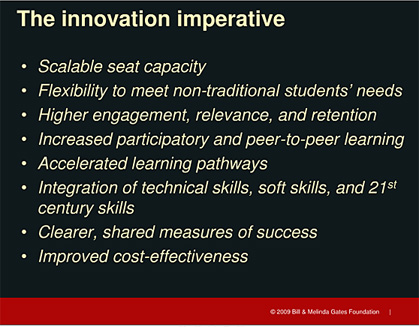
.
I originally saw this at xplana.com
Musical instruments of the future – Reactable — from David Kusek, VP at Berklee College of Music
There is a lot of innovation happening with electronic music instrument and new interfaces. Reactable is one of the latest in music technology fusing DJ culture, touch screen topography and electro-pop showmanship. Coming to an iPad near you. Reactable says their company “is about the promotion of creativity and the mediation of culture through the application of the latest technologies in human computer interaction, music technology, graphics and computer vision.” Check it out.
.
How would you assess this? — from Education Stormfront
Excerpt:
The good news is that we are entering a golden age of learning. A time where the Yeols of the world will be able to connect with people who will appreciate, encourage and foster their gifts. It will be an explosion of personal expression, where everyone can finally reach their full potential. The resulting massive outburst of creativity will reshape the planet like nothing since the Renaissance.
Presentation from Nancy Duarte, HOW, and PicScout:
Mac version- http://bit.ly/9qhWTK
PC Version- http://bit.ly/aubGb3
.
.
From DSC:
This was a great presentation by Nancy Duarte that is very much worth checking out for anyone who regularly communicates information to others. I especially appreciated the slide on the need for all of us — in our organizations as well as for each of us as individuals — to constantly reinvent ourselves.
Here are some example slides:
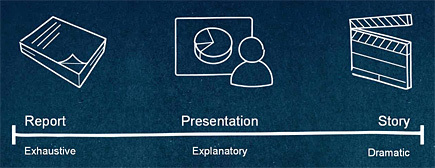
.
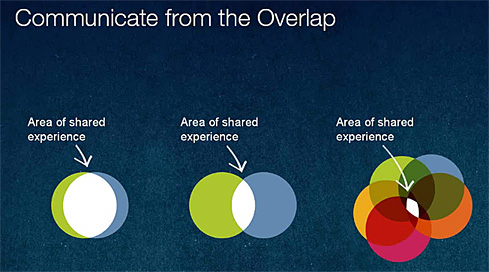
.
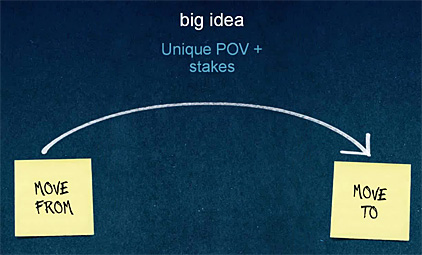
.
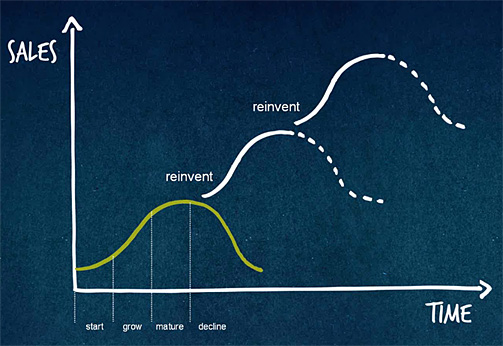
.
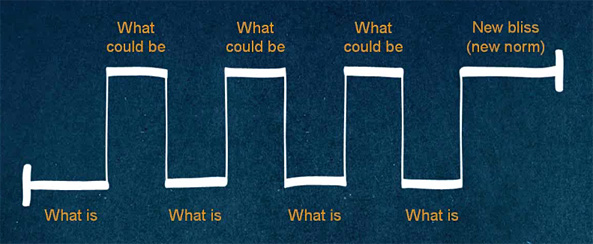
.
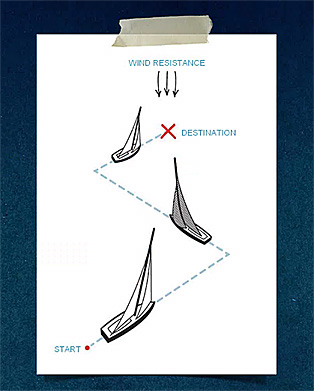
.
EDUCAUSE Review Magazine, Volume 45, Number 5, September/October 2010
If we want to discover how we can engage students as well as ourselves in the 21st century, we must move beyond skills and technologies. We must explore also the interconnected social media literacies of attention, participation, cooperation, network awareness, and critical consumption.
Learning powered by technology — from ednetinsight.com
Karen Cator, Director, Office of Educational Technology, U.S. Department of Education
The vision and model of learning articulated in the National Education Technology Plan, Transforming American Education: Learning Powered by Technology, was informed by the ideas, case studies, research, and involvement of thousands of teachers, parents, students, researchers, professors, and policymakers. The model posits that in order to transform American education, we need to leverage modern technologies to create a massively customized, superpowered learning environment tuned for this generation of students.
We are seeing more and more examples of effective and compelling learning opportunities in and out of classrooms using digital resources and online collaborative environments to engage and inform teachers and students. There are countless articles published, stories told, and student work displayed showcasing global interactions, presentations of creative solutions to complex problems, and professional grade works done by students and worthy of a wide audience. We are observing teachers challenging students with interesting assignments that allow for exploration and practice using technologies to do their work.
We see increasing inclusion of social and participatory experiences coupled with online learning. And alongside this advent of social networking technologies comes the ability to access presentations, lectures, and interviews with experts; repositories of highly produced media; and a wealth of museum, national, state, and local park resources and library and reference materials previously available only in physical locations. All of this is “at our fingertips” and “on the go” in our increasingly mobile-enabled world. These existing and emerging technologies, resources, and interactions combine to create what should be the golden age of teaching and learning.
So as we manage this transition from a predominantly print-based classroom to a digital learning environment, we have been launching a number of initiatives. Here are a few worth mentioning…
While looking at the video for Sonos Controller for the iPad, I wondered…what if we could replace the selection below — i.e. the word music with the words “educational providers” — and then control which room received which signal/content?
Wow…talk about a home dedicated to learning! 🙂
.
.
In July 2009, YouMedia launched as an ambitious attempt to re-imagine the library as a more relevant learning resource for today’s teens. Understanding that the landscape has changed how teens learn, socialize and self-identify, how do we remix the public library experience so it can truly engage teens in a way that supports its core mission? A partnership between the Chicago Public Library and the Digital Youth Network, YouMedia took on this task through the creation of a unique 21st century physical learning space and an innovative online space to connect learners 24/7. The 5,500-square-foot space is open seven days a week to any Chicago teen, where they have access to more than 100 laptops and desktop machines, professional grade cameras and software, and a full music studio all at no cost.
From the “About Us” page at YouMedia:

YOUmedia is an innovative, 21st century teen learning space housed at the Chicago Public Library’s downtown Harold Washington Library Center. YOUmedia was created to connect young adults, books, media, mentors, and institutions throughout the city of Chicago in one dynamic space designed to inspire collaboration and creativity.
High school age teens engaging with YOUmedia can access thousands of books, over 100 laptop and desktop computers, and a variety of media creation tools and software, all of which allow them to stretch their imaginations and their digital media skills. By working both in teams and individually, teens have an opportunity to engage in projects that promote critical thinking, creativity, and skill-building.
The Digital Landscape –What’s Next for News? — from spotlight.macfound.org
Harvards’s Nieman Reports weighs in on the future of journalism, including how young people are using technology as consumers and producers of information and how news organizations are looking to gaming as a way to engage audiences. Plus: evidence that journalism is not dying.
The new digital landscape, writes Melissa Ludtke, Neiman Reports editor, is “a place where game playing thrives and augmented reality tugs at possibilities. It’s where video excels, while the appetite for long-form text and the experience of ‘deep reading’ is diminished, and it’s where the allure of multitasking greets the crush of information.”